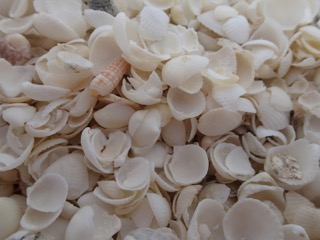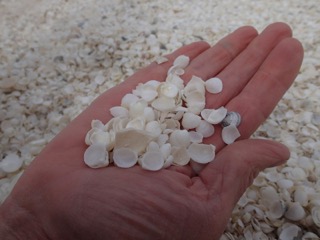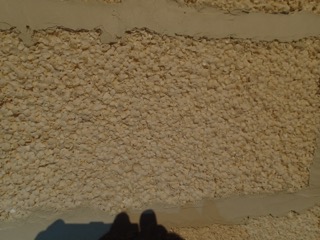Shark Bay, Denham ""25:56.30S 113:30.63E"

VulcanSpirit
Richard & Alison Brunstrom
Mon 20 Jul 2015 23:45
| Sadly the trip of VS to Shark Bay was marred by truly awful weather, the worst in over twenty years according to the locals and worthy of Scotland. But we still managed to see a few things. Shark Bay has a special place in the history of Australia. It was here in 1616 that Dutch captain Dirk Hartog became the first European ever to set foot on the continent. He came ashore on the northern tip of a large island which now bears his name at the northern entrance to the Bay. He left a pewter plate nailed to a post as a marker of his visit. Remarkably it was recovered 83 years later by the subsequent Dutch explorer Vlamingh, who replaced it with one of his own. Vlamingh’s replacement has not survived, but Hartog’s original can now be seen in the Rijksmuseum in the Netherlands - it’s on our list of places to see in Europe, eventually. Sadly the VS crew were unable to go ashore to see the site due to severe weather, but here is a replica of the famous plate in the (excellent) Denham museum:  Shark Bay is world famous for its stromatolites in Hamelin Pool but your correspondent has covered these in a previous Blog and will not repeat that here. However equally fascinating but much less well known are the cockles of nearby Shell Beach. Here are two of the crew on the beach:  This is a huge accumulation of the shells of the tiny fragum cockle Fragum erugatum, built up over only a few thousand years since the sea rose to its current level. The sheer volume of shells is staggering - the beach is not only a few miles long, the shells are up to 9m deep. They occur in huge numbers because the sea here is about one and a half time as salty as the open ocean (water evaporates more quickly from the surface than it is replenished from the ocean) and the cockles’ normal predators cannot survive. Here are the shells themselves:   Fascinatingly, these shells form a limestone called coquina which can be cut with a saw and used as a building material; here is a block in a wall:  The process is that infrequent rain absorbs carbon dioxide from the air forming a weak acid. This slowly dissolves the calcium carbonate from which the shells are formed. The liquid percolates down into the shells, with the calcium carbonate precipitating out as calcite which cements everything together. But most unusually the process is so delicate that the lower shells are hardly altered at all and the rock looks just like a pile of fresh shells. The famous WA spring wildflower season is just beginning. Sadly the crew of VS has to leave before it gets into full swing, but here’s a taster. Unfortunately I have no idea what the plants are:      And lastly the crew managed a trip to the famous red cliffs of Point Peron:    Next stop Carnarvon! |